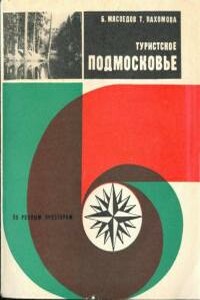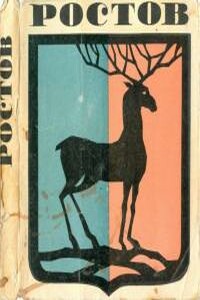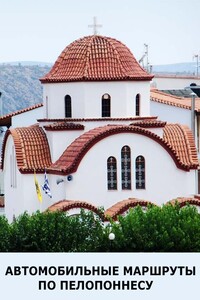Русский изразец - [6]
The yearning for multicolored, thematic painting impelled the tile-makers to return to polychromy and to break away from pure floral ornaments. Multicoloured tiles with a gamut of blue, green, brown and yellow tones became very popular.
Moscow still remained one of the largest centres of tile-making. By the middle of the eighteenth century it boasted more than a dozen pottery factories producing bright and original tiles. Most famous were those headed by Afanasy Grebenshchikov. Yan Flegner worked there for twenty years. Other notable factories were those of Pyotr Rusinov, Pyotr Vedeniktov, Yakov Fyodorov and Stepan Chyorny - on Taganka Street; at Smo-lenskaya on Arbat Street were the workshops of Yekim Oreshni-kov and Kondraty Kuznetsov; Afanasy Chapochkin's workshop was on Meshchanskaya Street.
Eighteenth century Moscow tiles displayed in the Museum are mostly thematic. Unlike the dramatically naive compositions of sixteenth-seventeenth century red tiles, the designs of the eighteenth century are humorous and often sentimental. The tile-maker depicts his everyday life - his work, entertainments, love, travels, coming home, or his state of mind - repentance, regret, hope, thoughts of life and death. Naive and primitive images of foreign people - Chinese, Arabs, Persians, etc., animals - camels, hares, deer; real and fantastic birds, were very popular. Some themes have a mythological or symbolic character, the meaning of which is not always clear. The image, depicted in one or two planes, lacked perspective. The scene, starting on one tile, sometimes finished in the next one. Symbolic landscape or architecture provided the background for the central figures. Vegetation was rarely depicted. Most often, the background was low bushy hills, two or three symbolic trees and flowers. Almost always inscriptions of explanatory, didactic and ironic nature accompanied the themes. One and the same aphorisms, applied to different and often contrasting themes, produced absurd effects.
The craftsman found his subjects in many fields - art traditions, folk poetry, everyday life, illustrated old Russian manuscripts. When the image was simple, it was executed on the spot without preliminary contour drawing. In this event the tile-maker worked freely, but no corrections were possible as the water-diluted paints, leaving a coloured layer on the surface of fresh glaze, were immediately absorbed by the slab. Among simple and primitive patterns images of people and animals are often executed with a perfect knowledge of anatomy. By the late eighteenth century classicism introduced greater simplicity and severity of contour, and balanced composition in tile ornament. Opulent frames were replaced by simple borders enclosing an antique vase, urn, a ribbon-tied bouquet of flowers, fruit. Sometimes a general pattern covered the whole surface of the stove, each tile bearing a part of the composition. The colours were cold - skyblue or darkblue against a white background. At this time high relief or "faience" stoves, coated with dazzling white enamel became fashionable. Such stoves, mounted in the mansions of the wealthy were an important element of the interior decor. Adorned with vases, sculptures, bas-reliefs on mythological themes, they were very striking. The stove displayed in the Museum is quite modest. It is dated 1806 - the time the house was built. The stove seemingly consists of two parts - the upper one, decorated with a relief eagle perched on a basket of fruit, and the lower, depicting a swan in relief, with a wreath on its neck. Both images are enclosed in floral ornament. Whenever possible, these stoves were fired from the corridor or from a back room. This type of stove, worked out in the late eighteenth century, was widely used up to the 1840's.
In the course of the nineteenth century the artistic significance of the Russian tile gradually decreased. Patterns became simpler. Colours employed were either blue or brown, sometimes green. The central image was reduced to a simple flower. Gradually the central pattern vanished and only a straight narrow ffame remained. Such cheap and easily-made tiles were in use everywhere. Only the provinces still preserved the variegated tiles of old. For instance, in the middle of the nineteenth century Kaluga craftsmen continued to make tiles with a rich baroque frame, enclosing either a large basket of flowers and tiny lemons, or a bouquet of flowers tied with a ribbon. Stoves faced with such tiles were simple, no architectural details broke the surface and the stove resembled a carpet with subdued, rhythmic ornament.
Special attention should be drawn to Northern tiles. Solvychegodsk, Totma, and Veliky Ustyug had their own tile workshops. The tiles in the Museum can be dated back to the eighteenth and the first half of the nineteenth century. There is little difference between them as the traditions and tastes worked out in the seventeenth century were adhered to for almost 200 years. Traditional Northern colours - green, white and yellow and sometimes dark-blue dominate. The image, always in relief, occupied several tiles. Usually it is flowers connected by interlaced twigs. By the late eighteenth century the design became simpler. Ornamental nettings of relief braces became a favourite. By the middle of the nineteenth century Northern tiles acquired the same features as those of Central Russia.

В книге дается туристская характеристика Подмосковья и приводится свыше 150 пеших, лыжных, водных и велосипедных маршрутов, из них 40 с описаниями. Рекомендуются маршруты двухдневные - в выходные дни, а также многодневные - в праздничные дни и в период отпуска. Приводятся сведения о подъездах к маршруту, направлении движения, местах привалов и ночлегов, достопримечательностях в пути. По книге нетрудно выбрать или разработать самостоятельно маршрут по сезону, силам и желанию. Для широкого круга любителей путешествий. 144 с.

Если выехать из столицы нашей Родины по магистрали Москва - Ярославль, то через три часа на пути встретится небольшой город - Ростов-Ярославский. Ростов имеет давнюю, богатую событиями историю, В здешних краях формировалась русская народность, крепло и развивалось русское государство, складывалась и росла культура нашего народа. На протяжении своей многовековой истории Ростов оказывался центром государственной, политической, административной, религиозной, экономической, культурной жизни края или страны. Ростов Великий - такое имя носил он в далеком прошлом.

В книге рассказывается история главного героя, который сталкивается с различными проблемами и препятствиями на протяжении всего своего путешествия. По пути он встречает множество второстепенных персонажей, которые играют важные роли в истории. Благодаря опыту главного героя книга исследует такие темы, как любовь, потеря, надежда и стойкость. По мере того, как главный герой преодолевает свои трудности, он усваивает ценные уроки жизни и растет как личность.

В книге рассказывается история главного героя, который сталкивается с различными проблемами и препятствиями на протяжении всего своего путешествия. По пути он встречает множество второстепенных персонажей, которые играют важные роли в истории. Благодаря опыту главного героя книга исследует такие темы, как любовь, потеря, надежда и стойкость. По мере того, как главный герой преодолевает свои трудности, он усваивает ценные уроки жизни и растет как личность.

Я ни в коем случае не претендую на авторство приведенных здесь текстов. Моей задачей, при создании этого материала, было собрать упоминания в интернете наиболее значимых или необычных достопримечательностях полуострова вместе, найти их GPS-координаты и проложить оптимальные маршруты для путешествия на автомобиле. Расчеты потребления бензина (9л/100 км и стоимость бензина - 2 евро за литр) специально несколько завышены.Вы можете загрузить координаты достопримечательностей, описанных в путеводителе, в GPS-навигатор с сайта http://gpspoi.info и проложить любой из маршрутов, опубликованных ниже, или создать свой собственный.Некоторые материалы переведены с греческого и английского.

В книге рассказывается история главного героя, который сталкивается с различными проблемами и препятствиями на протяжении всего своего путешествия. По пути он встречает множество второстепенных персонажей, которые играют важные роли в истории. Благодаря опыту главного героя книга исследует такие темы, как любовь, потеря, надежда и стойкость. По мере того, как главный герой преодолевает свои трудности, он усваивает ценные уроки жизни и растет как личность.